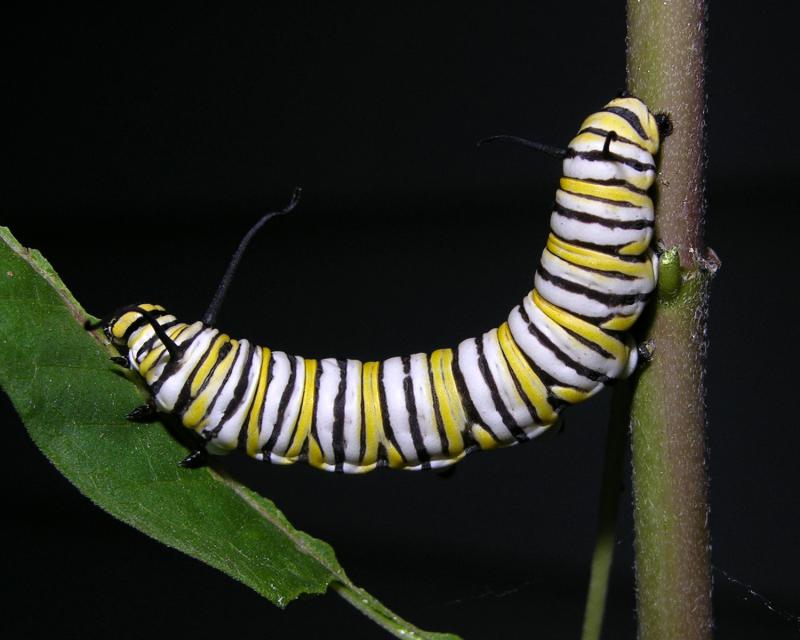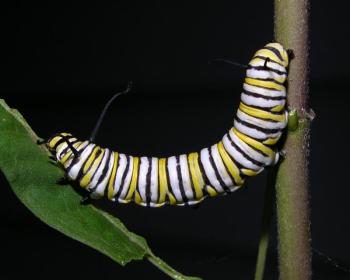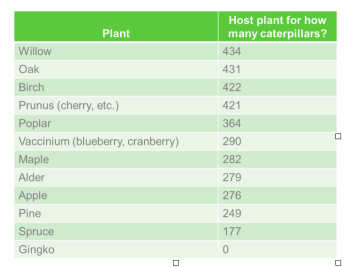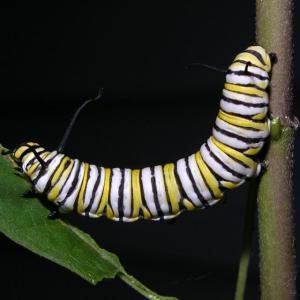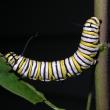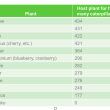It’s not just the pollinators: Promoting a balanced ecosystem
We know that the number and diversity of insects is decreasing. And we know we’re to blame – at least in part. Although we can’t change the world, we do have influence on our little piece of the world: our yards, fields and woods.
The energy of any ecosystem starts with the sun. Animals have no way of directly harnessing the sun’s energy to convert it to food. Only plants have chlorophyll, and only they can use the sun’s energy to turn carbon dioxide and water into carbohydrates. If we’re going to create or maintain a healthy ecosystem, it must start with the plants. But not any plant will do. Plant nurseries are fond of selling us pest-free plants. But what does that mean? Generally, the plant is pest-free because it is foreign, exotic, and our native insects can’t eat it. One might argue that it has wonderful flowers, like butterfly bushes (Buddleia sp.), that attract lots of insects. True enough, but only a minority of insects are pollinators, and, if we want to support a diverse ecosystem, we need plants that insects can also eat. Those herbivorous insects, in turn, provide food for the birds and other wild animals that we cherish.
Here’s an example. Ginkgo biloba is a popular ornamental tree that originated from two small areas of China. How many caterpillars in Maine can use it has a host plant? You guessed it: zero. Most herbivores feed only on a single species of plant or on a small group of related plants. Why? Because most plants have evolved to produce a host of toxic compounds to limit damage from herbivores. Herbivores, in turn, have evolved resistance to specific compounds and even use these compounds for their own defense. Take, for example, the monarch caterpillar that feeds on milkweeds. Milkweeds contain cardiac glycosides that are lethal to most insects. A few herbivores, such as monarch caterpillars, can tolerate and ingest the glycosides, which make them unpalatable or toxic to many potential predators. Getting back to trees, the following table illustrates the number of caterpillar species in the Northeast that feed on different genera of native trees:
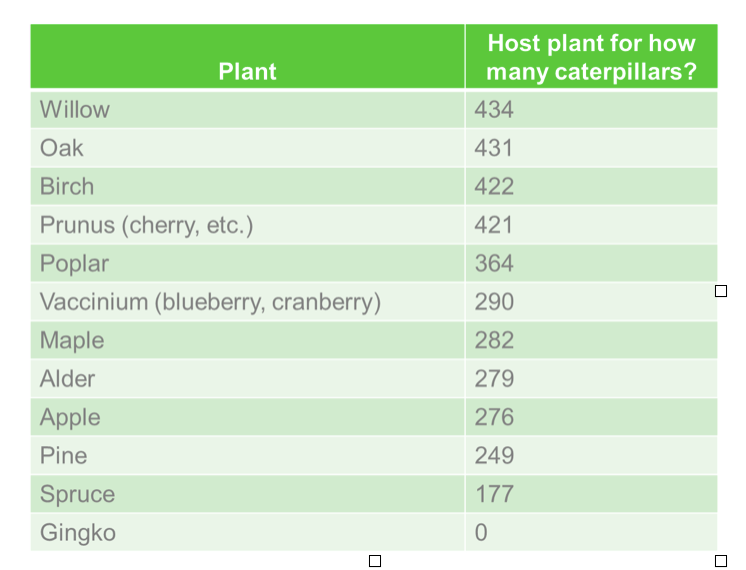
Data from https://www.nwf.org/NativePlantFinder/Plants/Trees-and-Shrubs/
You might wonder how, if native trees have so many “pests”, they are able to survive? These herbivorous pests have their own predators that control their populations. In fact, the populations of each native plant and animal in our backyard ecosystem is limited by the species around it.
If we want a robust, healthy ecosystem, we need to start with native plants with which our native insects have co-evolved. Exotic plants may be “pest-free”, but they are ecological wastelands. We need to serve up the buffet of native plants on which our insect-friends feast.
Close to where I live is a perfectly manicured lawn. Nary a dandelion to be seen in the spring. I shudder to think of the herbicides and insecticides used to maintain that lawn. And how much of that chemical soup ends up in nearby streams and eventually in our rivers, lakes and oceans?
Several years ago, a friend asked me to do an informal survey of the insects around his house on Appleton Ridge. There were zero insects on the shrubs that should have been covered in them. I asked him whether he recently used an insecticide on his property. He proudly stated that he never does. And then he remembered that the previous week the blueberry field that abuts his property was sprayed. Should we be surprised that the worldwide population of insects has plummeted?
Fields in Maine are an unnatural treasure. Why? Because any field if left to its own devices will rapidly become a forest. We need to mow, bush-hog or prune out the trees in the field in order to maintain it. On the other hand, fields, especially those surrounded by forests, are a mecca of insect diversity. It’s worth maintaining them. My backyard is a one-acre field that the previous owner bush-hogged every fall. Now, each fall I spend a couple of hours cutting out the native trees and invasive plants, such as multiflora rose (Rosa multiflora) and glossy buckthorn (Rhamnus frangula). It gets easier every year. The reason that I do it by hand is that I want the native shrubs such as arrowwood (Viburnum dentatum), wild raisin (Viburnum cassinoides) and winterberry (Ilex verticillata) to grow. I have photographed over 300 species of moths in our backyard, a testament to the diversity of species that inhabit the field.
Our local Land Trust (Coastal Mountains Land Trust) maintains several large fields that used to be mowed whenever was convenient for the mower. Now, wherever possible, one-third of each field is mowed once every three years. The mowing is done in late October, which allows the insects to complete their life cycles. It also avoids the person mowing being attacked by yellow jackets whose hive had just been run over.
Of course, everything we do to our surroundings has consequences. My field has become a haven for wild raspberries, because their second-year canes have a head-start on the wildflowers that start fresh every year. The wild raspberries don’t produce much fruit, but they have attracted a bumper crop of raspberry cane borers (Oberea bimaculata), a beetle that girdles the tips of first-year canes. When I planted a 20-foot row of cultivated raspberries in the middle of our lawn, the cane borers thanked me for the lush new crop of juicy canes. Fortunately, there are enough raspberry plants to share with everyone but the Japanese beetles!
Hopefully, these thoughts will convince you of what you’ve heard many times before: plant native, avoid chemicals and cherish the insects as your friends.
Roger Rittmaster, M.D., lives in Camden
Event Date
Address
United States

